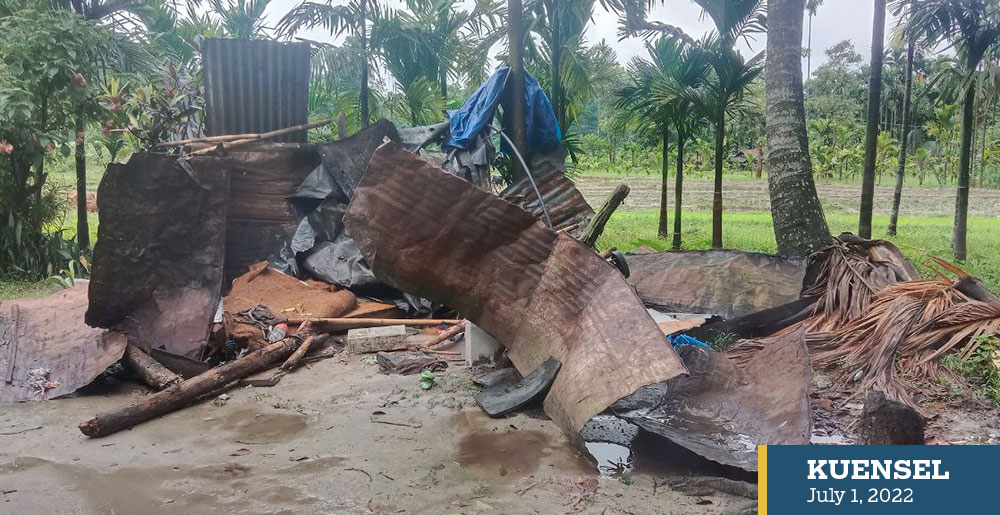Choki Wangmo | Dagana
It has been eight years since Karna Bdhr Monger, 73, has been living a difficult life. Wheel-chair-bound, it hasn’t been easy for Karna. He feels lucky to have escaped death from elephant attack, however.
Karna was herding his cattle in Khurul, Lhamoidzingkha when an elephant attacked him in 2014. He escaped with serious injuries, on the stomach. From Lhamoidzingkha hospital, he had to be referred to Gelephu central regional hospital.
“I couldn’t walk after the surgery,” Karna said.
Human-wildlife-conflict (HCW), mostly with elephants in Lhamoidzingkha, has increased in recent years, according to residents.
Every night, Lhamoidzingkha gewog mangmi, Laxman Chhetri, receives phone call from residents seeking help to chase away the elephants.
“At times, there are various reports of attack in different places in one night. Sometimes, it is a huge herd,” he said.
The mangmi, with the help of forest officials and rangers, help villagers to chase away the beasts.
Laxman said that the elephants have become clever and can step over solar fences and other barricades without difficulties.
As the gewog is close to the Indian border, he said that animals take refuge in Bhutan as they are hunted down on the other side.
Since 2014, three major animal attacks were reported.
A person was killed last year.
Recently, a 53-year-old man from Koilatar was referred to the national hospital in Thimphu after an elephant attacked him and damaged his home.
Lhamoidzingkha Gup Surja Bdhr Limbu said that without new strategies to tackle HWC, the problem is expected to increase in the future as human encroachment into habitats increases with increased population.
“The elephants use their tusks to pull out electric fences,” he added.
A few months ago, seven households from Pagli lost about seven acres of their cardamom yield to elephants, the gup said, adding that without compensation schemes, the farmers were at a loss.
Residents said that the elephants have started rampaging through areca nut orchards even. Almost 70 percent of the population depend on areca nut for income.
The gup said that with human resource shortage, it was difficult to monitor HWC.
Lhamoidzingkha drungpa, Kinley Dorji, said that the conflict was rampant in the area. He said that local methods failed to keep the animals away.
“It is even more challenging during monsoon. Installing streetlights could be one solution,” he added.


